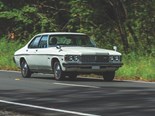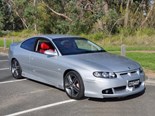Lexus IS300 Review: Buyers Guide
 Lexus IS300
Lexus IS300

 Lexus IS300
Lexus IS300

 Lexus IS300
Lexus IS300


|
|
Lexus IS300
|

|
|
Lexus IS300
|

|
|
Lexus IS300
|
Local expert Joe Kenwright walks you through the tips and traps of buying a pre-loved Lexus. See Unique Cars magazine for more of his reviews.

|
|
Buying a used Lexus IS300
|
Lexus IS300
HISTORY
Known elsewhere as the Toyota Altezza, the baby Lexus IS200 appeared to revive the much-loved Toyota Cressida after the GS300/Supra-engined six-cylinder version arrived in August 2001. But the resulting Lexus IS300 is no closer to the Cressida than the first Commodore was to the Kingswood. Aimed at similar rear-drive Mercedes-Benz and BMW models, the Lexus IS300 shared the same 2670mm wheelbase as the first Commodore and Chrysler Centura.
Toyota faced the same challenges splitting the wheelbase between engine bay and cabin to maintain passenger room and balance with the hefty, iron-block, 3.0-litre 24-valve straight six in the nose. Geared to the usual 1700mm Japanese width restrictions, the IS300 leant towards a nimble, balanced feel over a spacious cabin, with a 10.2m turning circle as a bonus.
After outputs were cut by 9kW and 11Nm over the GS300, the remaining 157kW/288Nm covered most requirements, although the extra fuel consumption and no manual option can be veto items. Sticky tyres and sophisticated suspension front and rear kept it tidy in the dry, but for ongoing, slippery conditions, shop elsewhere. Crisp styling has weathered better than some European rivals.
After splitting into Sports and Sports Luxury models for 2004-05, the IS300 was the last of these big and torquey in-line sixes. Apart from width, the IS300 shadows what former Holden chief Peter Hanenberger believed Holden should have been building as an early Commodore/Torana replacement.
BUYER'S CHECKLIST
Prices
The IS300 has become a desirable replacement for an ageing Nissan Skyline or VL Commodore. Prices start at about $12,000, with $15,000 needed for a decent car and $20,000 for the best.
Checkpoints
- Check that it's a genuine locally-delivered Lexus IS300 and not a rebadged Toyota Altezza import.
- Build quality and proven mechanicals deliver outstanding reliability but only if powertrain and suspension componentry is serviced by the book.
- Basic five-speed auto could thump in the 1-2 shift and slur the 2-3 shift on first examples, which was partially addressed by later ECU updates. If an example has not seen a Lexus dealer for some years, check that all software updates have been uploaded and there are no hidden faults.
- Generous 150,000km timing belt interval can be a trap on low-mileage cars as the first IS300s are old enough for time-related failure and a hefty repair bill if not addressed soon.
- Timing-belt-driven water pump can wear out and leak. To avoid big repeat labour bills, replacing the pump at each belt change is advisable.
- On some examples, especially those that have skipped services or overheated, the camshaft seals can also leak and incur even bigger labour charges to replace.
- On neglected examples with worn ball joints, the ball joints can pop out with disastrous results if the warning signs are not heeded.
- Headlights can show some UV-crazing but should polish out easily on most examples.
- Four top-quality tyres of the same brand and type with regular four-wheel alignment checks are essential to access this much grunt under all conditions.
Thanks to Melbourne City Lexus (03 9373 7444)
Unique Cars magazine Value Guides
Sell your car for free right here
Get your monthly fix of news, reviews and stories on the greatest cars and minds in the automotive world.
Subscribe

.jpg)









